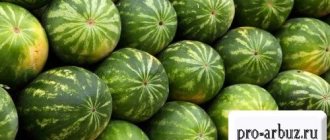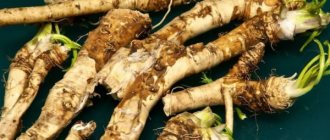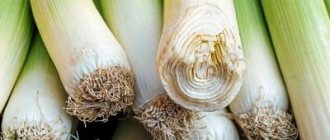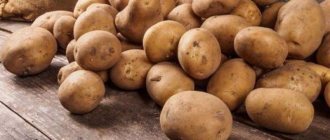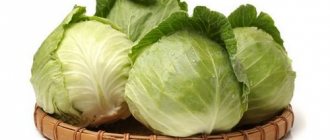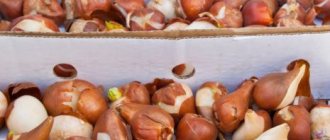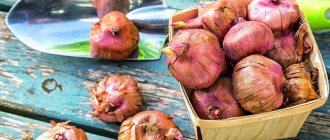Storage Features
Where and how to properly store corn in winter depends on the condition of the raw materials. At home, the principles of industrial storage will help preserve the beneficial qualities of the crop:
- The temperature during laying does not play a special role; only the humidity of the raw materials is important (12-14%).
- Corn harvested from industrial fields is cleared of its outer leaves and, to prevent it from rotting, is kept in so-called sapetkas - wind-blown lattice wooden buildings.
If you do not have suitable conditions, you can do the following with grains and whole cobs:
- freeze fresh;
- freeze after cooking;
- dry;
- preserve.
Now we need to say a few words about the varietal characteristics of the cereal, since not all of them are suitable for canning and freezing.
Corn is the oldest domesticated grain. Contrary to popular belief, there are three wild subspecies of this crop, so the theory of its extraterrestrial origin has no compelling basis
There are varieties recommended by breeders for fresh consumption only:
- "Alina";
- "White cloud";
- "Golden Bahtam";
- "Temptation";
- "Sugar Cob";
- "Krasnodar Sugar"
There are 99 varieties of sweet corn in the register, and only 5 of them are recommended for freezing:
- "Fun";
- "Merkur";
- "Nika 353";
- "Tsukerka";
- "Chell."
What happens if you freeze others? You can also eat them, but they will be tasteless and unflavoured.
Most varieties are intended for fresh and boiled consumption, as well as for canning.
We also recommend reading:
Cabbage: how to prepare and store fresh. Canning, drying, freezing How long to store cauliflower at home: cellar or refrigerator? Zucchini for the winter: how to store a dietary product at home Harvesting horseradish root for the winter: storage at home, processing methods
Do you know that…
Late varieties of the crop, harvested at the stage of milk maturity, remain fresh longer. The skin on the grains is not so rough, but strong enough not to burst during processing.
Useful qualities of corn
Corn grains contain starches, fiber, protein, and fats. They also offer a good range of vitamins. Sprouted grains are very useful, they are used in dietary nutrition, preparing porridge from them and adding them to salads.
Extracts of crushed seeds are distinguished by antitumor activity. In folk medicine, roasted corn kernels in combination with honey are used for gastrointestinal disorders .
The oil produced from the cereal is also valued. It is recommended for people suffering from atherosclerosis, obesity, and liver disease.
In addition, corn is simply a filling and delicious food. For example, canned grains are one of the main ingredients in many salads: with chicken, with Chinese cabbage, etc.
Storing cobs
If you have a rich harvest and have enough space to accommodate it, it would be useful to learn how to store corn on the cob.
Cooking, medicine, production of alcohol and vegetable oil, folk crafts - these are the uses of culture
Freezing fresh
Fresh corn, even if provided with the proper conditions, will not remain sweet for long. Gradually the sugars are destroyed. After just 3 days, the cereal will lose its original sweetness, and after a week it will become bland and hard.
Cling film will help prolong freshness a little:
- The peeled, unwashed cobs are wrapped in plastic and placed on the vegetable shelf of the refrigerator.
- If there is too much harvest, some can be placed in the freezer immediately after packaging.
Freezing is the best way to store corn for future use. This method allows you to completely preserve its taste characteristics.
To prevent the product from becoming “rubbery”, it is subjected to a special treatment - hardening:
- Prepare two large saucepans. Pour cold water into one along with ice cubes, and in the second the water should boil.
- Take the cob with tongs and plunge into boiling water for 2 minutes. It must lie in ice water for the same period of time.
- Repeat hardening 3-5 times.
- Remove the product and place it on a thin towel until the moisture has completely drained.
- Wrap each cob in cling film and place in the freezer.
The product will delight you with its delicate taste until the next harvest.
Tip of the day
Do not cook cobs while frozen. Wait until they are completely thawed, and then heat them. If you throw them directly into boiling water, the skin of the grains will become too tough.
Freezing after boiling
Boiled corn is incredibly tasty and healthy immediately after harvesting. If you have cooked more cobs than you could eat right away, it is better not to remove them from the broth. The liquid will help preserve the tender grains for another 2-3 days, but only in the refrigerator. At room temperature, corn sours very quickly.
Corn is a high-calorie product, and the highest calorie crop among all cereals
How to freeze corn on the cob after boiling? If you know in advance that part of the boiled harvest needs to be put aside for storage, repeat the hardening procedure at the final stage of cooking. After this, wrap the corn in cling film and place it in the freezer.
Tip of the day
Ensure that the packaging is completely sealed, otherwise the grains will certainly absorb foreign odors during storage.
Drying
Drying is another common way to store corn at home. But the method has an important nuance - only cobs that have reached milk or wax maturity are suitable for drying. If the grain is completely ripe, then after drying it will only be suitable for feeding animals.
Dry the cobs in a dark place with good ventilation. The attic is suitable for these purposes. Perform the following manipulations:
- Remove the leaves towards the base, but do not tear them off.
- Pierce the base of the cob with an awl and insert a hook made from a large metal paper clip or some strong thread.
- Suspend, ensuring air access from all sides. You can tie the leaves in pairs or make a corn braid.
Monitor the humidity level and periodically inspect the crop for spoilage.
Do you know that…
The dried product is subject to long-term heat treatment. Boiling time is 4-6 hours.
Canning
You can also store corn on the cob for the winter using the preservation method. Small specimens are suitable for these purposes; after processing, they can be consumed together with the core. Even the little picky eaters will appreciate this side dish.
The entire canning technology is shown in this video:
Glass jars will last in the cellar or basement for up to 3 years. Even at home under the bed, canning will not spoil if you maintain the humidity no higher than 75% and the temperature up to 25 ⁰C.
Drying
The corn, prepared as described at the beginning of the article, is tied in bunches using the remaining leaves and hung on a rope or braided. Drying should be considered complete if the grains easily fall out of the cob when struck.
When it happens in the first two weeks of September, it is better to carry out the operation in the fresh air. If the temperature outside is already below +10 °C, then hang the cobs indoors. Make sure that the product is not exposed to the sun - it should always be in the shade.
Try not to hang the corn too closely - you should leave at least 5 centimeters of free space between the bunches. If the room is small, then weave braids from the cobs like onions. Their optimal length is 90-100 cm.
Grain processing
Tender sweet grains can be stored separately from the cob. The beauty of this method is that it saves space. If you follow the tips below, the grain will remain juicy and sweet for quite a long time.
All of the above recipes for storing corn on the cob are also applicable for grains.
Freezing fresh grain
To freeze fresh kernels, the cob is “hardened.” This procedure will seal the moisture in the grain and preserve its original juiciness.
After drying on a towel, carefully cut the grains from the core. Place the product in the freezer on a baking sheet, shake occasionally as it hardens. After freezing, seal the grain tightly and put it in the freezer.
Frozen corn kernels are an excellent ingredient for homemade vegetable mixtures.
There is another way:
- Place the prepared cobs in a wide container and fill with a special solution.
- For every liter of water with ice cubes, take 1 teaspoon of salt and lemon juice.
- After soaking for 20 minutes, remove the cobs and let the liquid drain.
- Place in airtight bags or food containers and place in the freezer.
Do you know that…
Grain that has been frozen reaches readiness when cooked much faster than fresh grain.
Freezing cooked product
Proceed with boiled grains as follows:
- Boil the corn the traditional way.
- Remove from the broth and cool.
- Trim the kernels with a sharp knife, holding the cobs upright.
- Place the grains in a plastic bag.
- Place in the freezer.
Store as much as you like, just don't defrost.
Tip of the day
To defrost, place the grains in boiling salted water. In 1-2 minutes, the most aromatic corn is ready.
Drying grain
Drying is an excellent method to preserve grain. It is only suitable for making popcorn or feeding animals.
The grains separated from the cob are dried in the open air or in special dryers for 6-24 hours. Store them in fabric bags or food containers in a cool, dry place.
Do you know that…
Humidity during grain storage should be at 13%. A suitable place for large volumes may be the attic, for small volumes - a mezzanine or storage room.
Whole canned corn in jars is an excellent and simple preparation.
Another classic way to store boiled corn until winter. This appetizer can be used as a side dish with vegetables, meat, fish and poultry dishes.
For preparation, take the following amount of ingredients:
- milk corn, juicy cobs - 2-3 kg;
- peppercorns and bay leaves - 3-4 pcs. ;
- salt, sugar and table vinegar (7-9%).
Ripe and juicy young cobs are carefully sorted and cleaned of all excess, tendrils, leaves and fibers. Rinse in cold water and allow the liquid to drain.
Next, according to the technology, place the vegetables tightly to each other in a deep steel pan with water and after boiling, cook for another 7-10 minutes until half cooked.
The third stage is to cool the boiled cobs in the cold, allow them to cool completely and remove excess liquid. At this time, prepare containers for sealing, which must be sterilized over steam or in the microwave. Fruits that are too long can be cut in half or into quarters so that they fit more tightly into the jars.
A few peas of allspice, chopped bay leaf and 1-2 teaspoons of table or wine vinegar are poured into each container. Or they add spices directly to a marinade on the stove, which is made from water mixed with salt and sugar and other seasonings to taste, such as dried cloves or cumin seeds.
Hot brine is poured over the sorted cobs, rolled up with iron lids and turned over. As soon as the seams have cooled, they are sent to a cool cellar or on dark and dry shelves on the balcony or in the pantry.
Signs of corruption
You can determine that the corn has disappeared by the following signs:
- Mold formation.
- Traces of insect activity.
- Covered with sticky mucus.
- Unpleasant putrid or sour odor. This symptom is more relevant for boiled and canned corn; dry corn usually does not sour or rot.
Spoiled fruits should not be eaten. This may cause poisoning. It is also not advisable to give them to livestock and pets. It is better to dispose of such a product immediately. Sour corn can be used as fishing bait.
Tips and tricks
There are two main reasons for the reduced shelf life of ripe cobs:
- violation of product procurement technology (insufficient cleaning before storage, use of dirty containers, etc.);
- failure to comply with recommended temperature and humidity levels (humidity above 15% and temperature above 4°C).
Thus, compliance with the following recommendations will increase the shelf life of fresh and cooked products:
- Clean the cobs thoroughly before storing.
- Store corn in an airtight container - the lack of air access inhibits the rotting process.
- When canning, use clean, sterilized containers.
- If you decide to freeze a large batch of corn, be sure to label the freeze date. Next season, last year’s preparations will be easy to distinguish and use first.
- Canned corn quickly deteriorates after the jar is depressurized, so once you open it, use its contents immediately.
